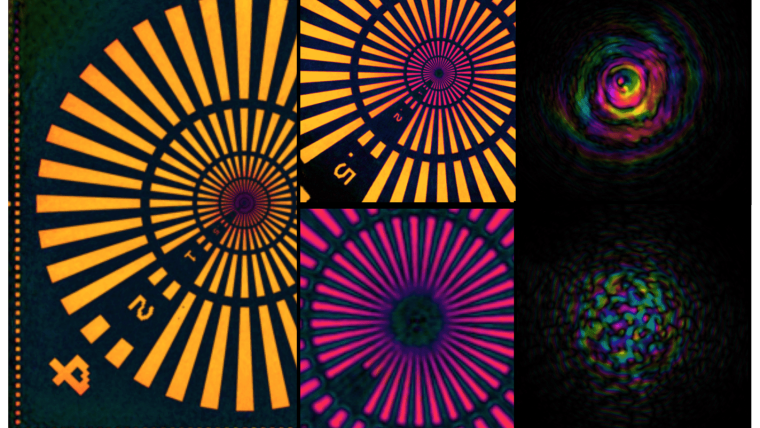
- Light
- Forschung
Published: | By: Ira Winkler
At this year's High-Intensity Lasers and High-Field Phenomena (HILAS) conference, which took place from March 12 to 14 in Vienna, the Student Paper Award for outstanding presentations and conference contributions in the field of “Compact EUV and X-ray light sources” was presented to a PhD student of the IAP. This biennial conference attracts a wide audience from academia and industry and records around 500 visitors.
This year, Wilhelm Eschen was honored with the Student Paper Award. His paper entitled “High-Speed, High-Resolution, and Material-Specific Coherent EUV Imaging Using a High-Order Harmonic Source” presented a new EUV microscope that combines the advantages of state-of-the-art laser-driven coherent EUV sources and the latest computer-aided imaging techniques. This technology, so far mainly limited to large-scale research facilities such as synchrotrons, achieves a spatial resolution of less than 20 nm. This extraordinary performance is made possible by the first-time use of structured EUV beams.
Wilhelm Eschen was also able to show that the methods he has developed enable the identification of subcellular structures in biological samples. This was impressively demonstrated using a model organism (Aspergillus nidulans). His method has decisive advantages over other established methods. For example, the EUV microscope he developed offers deeper penetration and better chemical contrast compared to conventional electron microscopy.
The new methods presented for improving the resolution, speed and accuracy of EUV microscopy open up many other potential applications. Critical components in EUV lithography machines can thus be examined in high resolution “at-wavelength”. There are also numerous promising applications, such as the investigation of new types of battery materials, integrated optical circuits or other microorganisms such as bacteria and viruses.
For Wilhelm Eschen, the prize is a great honor at the end of his time as a doctoral student at the IAP: “I am particularly proud to be part of a team that is setting new standards in the field of lensless EUV microscopy. The award confirms that the research that has been pursued in recent years is promising and that lensless EUV microscopy can establish itself as a complementary imaging method to existing methods in the future." His work was carried out at the IAP and HI-Jena under the supervision of Prof. Jens Limpert and PD Dr. Jan Rothhardt.